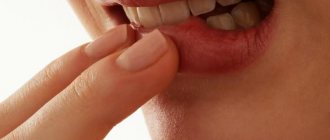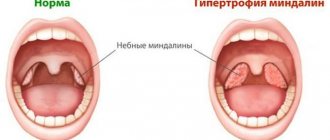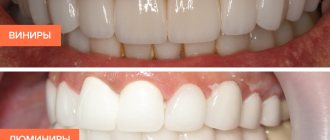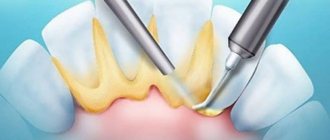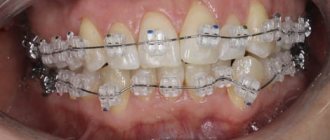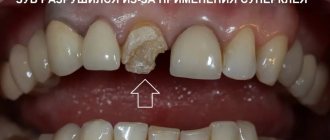A couple of years ago, an outbreak of the “extremely dangerous” new Coxsackie virus, as the media dubbed it, occurred in Turkey. In fact, this virus is not new at all and has existed for many, many years. And this virus is not dangerous at all, only very contagious. The causative agent of hand-foot-mouth disease is the Coxsackie virus of the enterovirus family. Most often, children under 10 years of age are susceptible to the disease, but adults can also get sick. Coxsackie enterovirus multiplies in the gastrointestinal tract. In total, about 30 serotypes of the Coxsackie virus have been studied. Today in this article we will tell you what is important to know about it and how to treat it.
What is important to know?
The incubation period lasts from 3 to 5 days and is rapid. Characteristic symptoms of the disease are high fever, reaching 40 degrees, and a rash in the form of red spots with blisters in the center. Most often, the rash is located in the mouth (tongue and gums), on the arms and legs, it can also affect the buttocks, especially in the anus, and single elements of the rash can appear on any part of the body.
The duration of the disease is on average about 10 days. According to statistics, the peak incidence occurs in summer and autumn. The Coxsackie virus does not cause immunity, that is, it is quite possible to become infected again, but the course of the disease will be easier than the first time.
You can become infected from a sick person or from a carrier of the virus. Infection most often occurs in resorts near the sea during the season.
The Coxsackie virus is transmitted by airborne droplets, household contact and food, that is, you can become infected through dirty hands or shared utensils, dirty toys, sand, water, unwashed vegetables and fruits. You cannot get infected from animals.
Three outcomes of the disease:
- The child recovers completely
- The disease becomes chronic when organs retain the virus for an indefinite period of time.
- The patient becomes a carrier of the virus
Two groups of Coxsackie virus:
- Viruses of this group infect mucous membranes and skin. Characteristic features for this type of virus are herpangina, serous meningitis, vesicular stomatitis, acute hemorrhagic conjunctivitis.
- Viruses of this type infect the pleura, heart and pancreas. The liver suffers greatly.
Prevention of Coxsackie virus
There is still no specific prevention, which is due to the large number of serotypes of the virus. Nonspecific prevention includes:
- compliance with personal hygiene rules (thorough hand washing with disinfectant solution after visiting the toilet/before eating);
- Thorough washing of fruits and vegetables before consumption and rinsing with boiling water;
- using bottled water for drinking;
- swim only in permitted places; do not swallow water while swimming;
- avoiding contact with persons with clinical manifestations of EVI.
When a focus of EVI is identified, in order to localize it, the following is carried out:
- Active identification of patients with EVI and persons in contact with patients and establishment of monitoring of them.
- Isolation and hospitalization of patients (if necessary).
- Disinfection measures - disinfection (final and current).
- Strengthening sanitary supervision over catering, the water supply system, maintenance of the territory, compliance with the regime of organized children's groups and health care facilities.
- In case of an unfavorable epidemiological situation, it is recommended to administer 0.3 ml/kg of gamma globulin to all persons in the foci of infection.
Symptoms of the disease
As we said above, the incubation period of this enterovirus infection is rapid and lasts from 3 to 5 days. In this case, the temperature can reach 40 degrees and decrease extremely poorly, even with the help of antipyretics.
Nausea and vomiting, pain in the labor and throat, and refusal to eat may occur. An important symptom is a skin rash or exanthema and a rash on the mucous membranes or enanthema. The rash is localized in the arms, legs, less often the buttocks and genitals, as well as on the mucous membranes of the cheeks and tongue. Symptoms of enterovirus infection may be mild, which makes diagnosing the disease difficult.
The disease affects children under 10 years of age, with 95% of cases most often affecting children under 5 years of age. Adults are very rarely affected; the disease is most severe in pregnant women, the elderly and people with immunodeficiency. If the Coxsackie virus is detected in a pregnant woman, then first of all it will be dangerous for the baby, and not for the mother. In this case, the child will be born with symptoms of the virus.
The contagiousness of the disease is very high; several family members or even a class can become ill at once. Despite the fact that epidemics occur mainly in the summer and autumn, it is quite possible to get sick throughout the year.
Stages of the disease:
On days 1-2, the child may feel a sore throat, abdominal pain, possibly a decrease in appetite or a slight increase in temperature. One or more conditions may be present.
After 3-7 days or longer, these symptoms disappear and ulcers appear in the mouth, a rash on the arms and/or legs that begins to itch, and the lymph nodes in the neck become enlarged.
On days 7-10 , the disease usually goes away on its own.
Very rarely, a child may begin to peel off his fingernails and toenails, which goes away within 3-6 weeks after the illness. In this case, fingernails grow back within 3-6 months, and toenails within 9-12 months.
During illness, it is important to leave the child at home and not attend kindergarten, school or other public places.
Important! The blisters will remain contagious until they dry, which is a few days after they appear. Another month after the illness, the stool will be contagious.
You should consult a doctor immediately if:
- the rash blisters become painful or filled with pus, as there is a possibility of secondary infection;
- the rash on the child’s oral mucosa has become too painful that the child cannot open his mouth and refuses to eat and drink.
Call an ambulance immediately if:
- the child does not pee for more than 8 hours;
- the baby's fontanel becomes sharply sunken;
- the baby cries without tears;
- The child’s lips were cracked and dry.
These are all signs of dehydration!
You should also call an ambulance if:
- stiff neck is observed, that is, the baby cannot press his chin to his chest;
- Strong headache;
- backache;
- fever above 38 degrees.
General information
Coxsackie virus and ECHO virus belong to the group of enteroviruses and are the main causative agents of enterovirus infection (EVI).
In recent years, there has been a tendency towards activation of Coxsackie viruses and an increase in infectious diseases caused by enteroviruses. The incidence rates of EVI in the CIS countries vary between 11.5-16.2/100 thousand population. The majority of cases are children (90%). The specificity of EVI is the polymorphism of clinical manifestations, which is due to their ability to affect various tissues/organs (kidneys, heart, central nervous system, lungs, liver and others), long-term virus carriage, the presence and wide distribution of asymptomatic forms, the absence of a clear pronounced dependence of nosological forms on the serological type of the pathogen , as well as the lack of specific methods of prevention, which makes enterovirus infections practically uncontrollable.
Diseases more often occur in the form of sporadic morbidity, but every 3-4 years epidemic outbreaks caused by different serotypes of Coxsackie viruses are recorded around the world. Every year, the proportion of certain infecting serotypes of the virus changes significantly, which many authors explain by the accumulation of a “critical mass” of susceptible children, which is necessary to maintain the epidemic process. It is also important that one serotype of the Coxsackie virus in adults and children can cause clinically completely different diseases (even at the same time in the same family), while at the same time different serotypes of the virus can cause diseases whose symptoms are very similar, which complicates the diagnosis and treatment of patients .
Enterovirus infection Coxsackie in the everyday lexicon is called “Turkish flu” due to partial similarity with the symptoms of classic flu and the introduction of the Coxsackie virus into the CIS countries by people vacationing at resorts in Turkey.
Treatment and prevention
As a rule, the disease goes away on its own within 10 to 14 days after its onset. There is no cure for Coxsackie virus as such, so therapy is aimed at relieving symptoms.
It is quite possible to mistake the symptoms of hand-foot-mouth disease for a cold or even chickenpox. Therefore, treatment is often started if the child does not feel well.
Since the symptoms are usually mild, this infectious disease occurs without serious pathologies and consequences, and can end in recovery without treatment. But the earlier the disease is detected, the more the duration of the disease will be shortened, and in this case it is possible to prevent complications.
Symptomatic treatment of enterovirus infection includes drinking plenty of fluids, antipyretics if necessary, sprays for the throat and mouth, and if the rash is itchy, then the use of antihistamines is possible.
Prevention of the disease includes hand hygiene after going outside and visiting public places, ventilating the room in which the child is located during the day, buying only bottled filtered water for the child, washing fruits and vegetables before eating, and regularly washing children’s toys. Also, during periods of epidemic, you should not allow your child to visit public places.
So, Coxsackievirus or hand-foot-mouth syndrome is a highly contagious disease of the enterovirus family. Mostly children under 10 years of age are affected; in 95% of cases, these are children under 5 years of age. Important symptoms of the virus are a rash in the form of blisters on the arms, legs, mucous membranes of the mouth, and less commonly, the buttocks. The disease can be transmitted by airborne droplets, household contact and food. As a rule, it goes away on its own within 10-14 days. Treatment for the virus is aimed at relieving symptoms. If a baby has symptoms of the Coxsackie virus, then he should be isolated from other children, that is, not taken to school or kindergarten, and also call a pediatrician home. Be healthy!
Treatment of enteroviral infections
As in the vast majority of viral infections, it is symptomatic, since no specific therapy has been developed.
The main problem is related to pain when swallowing. Children may refuse not only to eat, but also to drink, which ultimately leads to dehydration. Therefore, it is important to provide high-quality pain relief and ensure sufficient fluid intake.
For pain relief in children, the same medications can be used as for reducing fever - drugs based on ibuprofen and paracetamol. The dosage should be calculated by the doctor depending on the weight of the child and the form of release of the particular drug.
Let me remind you that Aspirin is contraindicated for children due to the risk of side effects (for example, Reye's syndrome - acute liver failure and encephalopathy - a serious, life-threatening condition). Since pain prevents children from eating and drinking, medications must be taken on time - every 6-8 hours, i.e. without waiting for the next rise in temperature.
For drinking, it is better to offer chilled drinks. This is very unusual for our mentality, and it can be difficult to convince parents that cold drinking does not aggravate the disease and does not increase the risk of complications. You can also offer your child melted ice cream - in addition to drinking, this is also at least some kind of food. These recommendations are not someone’s personal invention; they are prescribed in all modern guidelines for the treatment of enteroviral diseases.
Despite the measures taken, regular food will most likely cause discomfort. Offer pureed, non-irritating foods (not sour, not spicy, not hot), milkshakes, sweet yoghurts. In addition, special nutrient-fortified drinks can be found on the baby food market. One glass of such a medicinal mixture replaces a full meal and can significantly help a child during the most difficult period.
Keep in mind that drinking from a mug or straw is easier than drinking from a bottle with a nipple (due to the biomechanics of sucking). Some children are afraid to drink on their own if it has already been painful, but agree to drink from a syringe (without a needle, for example, there is a measuring syringe in each bottle of antipyretic syrup).
